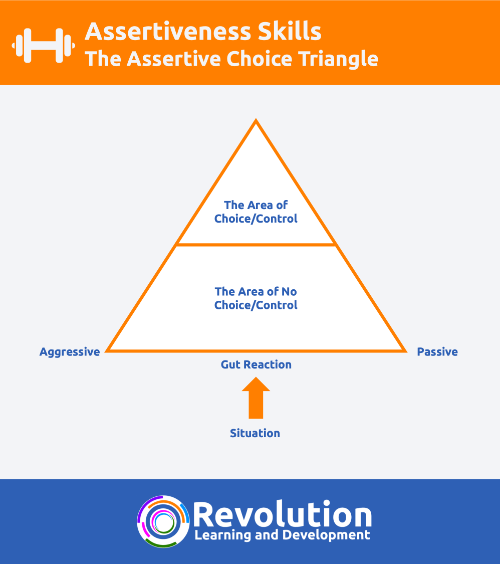Background
What is assertiveness? Assertiveness is a term that is used to describe a particular type of behaviour. It’s often associated with confident, strong and direct people. It is though a term that is often misunderstood and confused with aggressive behaviour.
If you speak to different people and ask them to answer the question of what is assertiveness or describe what assertiveness is, everyone will have a differing opinion. This is because assertiveness is behavioural, we all have different perceptions of what assertiveness is and what it looks like.
If you speak to different people and ask them to describe what assertiveness is, everyone will have a differing opinion. This is because assertiveness is behavioural, we all have different perceptions of what assertiveness is and looks… Share on X
Assertiveness is behavioural. It also has strong links to attitude and mindset.
One big assumption that is made about assertiveness is that it’s natural – some people are just naturally assertive. This however isn’t true. As you will see further into this article, assertiveness does not come naturally. It may be that the behaviour is confused with a personality type of temperament. Or, the person who we think is naturally assertive has just had plenty of practice at being assertive.
What is Assertiveness?
Based on the above, we can begin to further explore the question of what is assertiveness. Assertiveness is not just one skill. Assertiveness is a collection of skills, attitude and behaviours that are required to deliver the overall effect of being assertive.
- Skills – The learnt skills that are required to demonstrate assertiveness
- Attitude – Making the choice to be assertive
- Behaviour – The visible behaviours that we show others
As assertiveness is skills, attitude and behavioural based, it is not a natural behaviour. It takes conscious effort and practice to become truly assertive. Unlike passive, aggressive and passive-aggressive behaviour that is natural or ‘gut based’, we need to choose to be assertive in order to demonstrate it.
It takes conscious effort and practice to become truly assertive. Unlike passive, aggressive and passive-aggressive behaviour that is natural or 'gut based', we need to choose to be assertive in order to demonstrate it. Share on X
The Assertive Choice
To help put the point above into context and further explore the question of what is assertiveness, we can use the Assertive Choice Triangle as a way of defining where assertiveness sits in relation to passive, aggressive and passive-aggressive behaviour.
The assertive choice triangle is derived from the fight or flight response that we have. When we are faced with any given situation, particularly a situation that poses what we perceive as a threat, the bodies natural response is fight or flight. This means we will face the situation head-on (fight) or run away from it (flight). This is ‘gut based’ and we tend in these cases to follow our gut. The fight or flight response is going to happen whether you like it or not.

An assumption is that assertiveness sits mid-way between passive and aggressive. As you can see from the model, this isn’t the case. If it was, it would indicate that assertiveness is also a gut reaction too.
Assertiveness sits in the upper part of the triangle known as the area of choice or control. This means that in order to be assertive, we have to be in control of our response. This means we have to be in control of our emotional response, no matter how we are feeling naturally.
In effect, assertiveness is showing one thing while feeling another. We have to choose what we are going to show others and what we show should be based on the situation.
Assertive Behaviour
What does assertiveness look like? Here are some behavioural descriptions of what assertiveness is:
- Confident
- Direct
- Calm and controlled
- Smooth, precise body movements
- Good eye contact
- Expressing what you want, what you feel and what you need
- Asking questions to understand others positions
- Being able to take responsibility and admit to mistakes
- Positive attitude and outlook
- Friendly and supportive
Transformational Assertiveness
A common thought with assertiveness is the idea that we should always be assertive. We should engage our brains and make the assertive choice.
In some cases, being assertive might not be the correct response to the situation that you find yourself in. Sometimes you may need to protect your position (be aggressive) or just walk away (passive).
It is completely fine to do this providing the decision to do so has been made through the area of choice and not through the area of no choice in the assertive choice triangle.
In other words, you have made a conscious decision to be aggressive or passive and not an emotional decision or a gut-based reaction.
This is known as transformational assertiveness.
Assertiveness Techniques
To help you be perceived as being more assertive and to help you be more assertive, there are a number of assertiveness techniques that you can use. Some of the common assertiveness techniques are:
Further Learning
If you would like to learn more about being assertive and to further your own understanding of what is assertiveness, then attending an Assertiveness Skills training course can help. Take a look at our Assertiveness Training course for more details.




